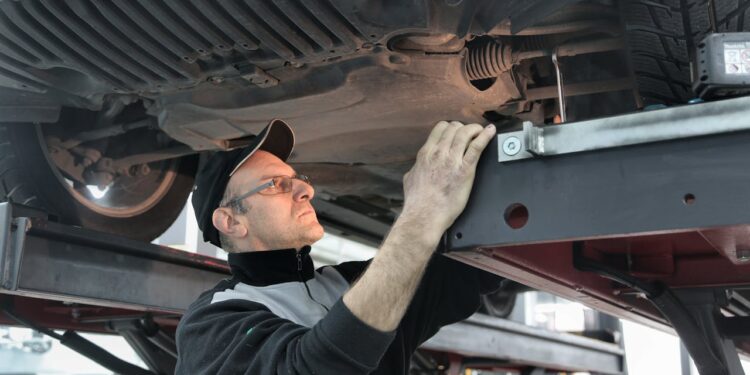Owning a car in Uganda is a significant investment, and proper maintenance is key to ensuring a long lifespan and avoiding expensive repairs. With Uganda’s varying road conditions—ranging from well-maintained highways to rough, unpaved roads—keeping your vehicle in top shape requires extra care and attention.
Many car owners wait until a breakdown occurs before visiting a mechanic, but proactive maintenance is far more cost-effective. By following the right car care practices, you can reduce wear and tear, improve fuel efficiency, and enjoy a reliable driving experience for years.
In this comprehensive guide, we’ll cover essential car maintenance tips tailored to Uganda’s unique driving environment, ensuring your vehicle remains in peak condition.
1. Follow a Strict Servicing Schedule
Routine servicing is the backbone of car maintenance. Skipping scheduled maintenance increases the likelihood of mechanical failures and costly repairs.
What to Check During Routine Servicing
- Oil and Filter Changes – Engine oil lubricates moving parts and prevents excessive wear. Change it every 5,000 to 10,000 km, depending on your car model. A clogged oil filter reduces engine efficiency and should be replaced regularly.
- Brake System Inspection – Uganda’s hilly terrain requires a reliable braking system. Worn-out brake pads and insufficient brake fluid can lead to dangerous driving conditions.
- Cooling System Maintenance – Overheating is a common issue in hot climates. Ensure your radiator is clean and your coolant levels are sufficient to prevent engine damage.
- Transmission and Gearbox Fluid – Many car owners overlook this, but transmission fluid is essential for smooth gear shifting. Have it checked and replaced according to your manufacturer’s recommendations.
- Battery Health Check – A failing battery can leave you stranded, especially during cold mornings or after long periods of inactivity. Inspect the battery terminals for corrosion and ensure the alternator is functioning properly.
For expert servicing and automotive advice, visit AutoMag Uganda, where you’ll find recommendations on the best service centers and car care tips tailored to Ugandan drivers.
2. Use High-Quality Fuel and Lubricants
Uganda’s fuel quality can vary, and using low-quality or adulterated fuel can cause engine deposits, reducing efficiency and increasing wear on engine components.
How to Ensure Fuel Quality:
✅ Always refuel at reputable stations such as Shell, Total, or Vivo Energy to avoid contaminated fuel.
✅ Consider using fuel additives to clean injectors and enhance combustion efficiency.
✅ Use manufacturer-recommended engine oil and lubricants to ensure optimal performance.
Low-quality fuel not only affects engine longevity but also reduces fuel economy, forcing you to spend more in the long run. Investing in the right fuel ensures better mileage and fewer engine issues.
3. Keep Your Tyres and Suspension in Check
Uganda’s roads can be unforgiving, with potholes and uneven terrain causing rapid tyre wear and damage to the suspension system.
Tyre Maintenance Tips:
- Check tyre pressure regularly – Underinflated tyres reduce fuel efficiency and wear out faster. Overinflated tyres, on the other hand, increase the risk of a blowout.
- Rotate your tyres every 10,000 km – This ensures even wear and extends their lifespan.
- Inspect for wear and replace when necessary – If the tread depth is too low, your tyres will have poor grip, especially on wet roads.
Suspension System Checks:
- Listen for unusual noises – Squeaking or knocking sounds when driving over bumps indicate worn-out shock absorbers or bushings.
- Avoid overloading your vehicle – Excess weight puts stress on the suspension and can lead to premature failure.
- Schedule regular inspections – A professional mechanic can check for alignment issues and worn-out parts before they become major problems.
Ensuring your tyres and suspension are in good condition not only improves safety but also enhances fuel efficiency and ride comfort.
4. Protect Your Car from Harsh Weather and Dust
Uganda’s dry season brings excessive dust, while the wet season can lead to rust and corrosion. Taking the right precautions helps preserve your car’s exterior and interior.
How to Protect Your Vehicle:
- Wash your car frequently – Dust and mud can clog air filters and corrode metal parts. Regular cleaning prevents buildup and maintains your car’s aesthetic appeal.
- Clean or replace air filters – Clogged filters reduce fuel efficiency and engine performance. Inspect them regularly, especially if you drive on dusty roads.
- Use a car cover or park in the shade – UV rays can cause paint fading and damage interior components like the dashboard and seats.
Simple preventive measures go a long way in keeping your car looking and performing well for years.
5. Maintain a Strong Battery and Electrical System
A weak or failing battery can cause starting issues, especially during cold mornings. Most car batteries last 2 to 4 years, but poor maintenance can shorten their lifespan.
Battery Care Tips:
🔋 Clean battery terminals regularly to prevent corrosion.
🔋 Ensure your alternator is charging properly; a faulty alternator can drain the battery.
🔋 If your car sits idle for long periods, start it occasionally to keep the battery charged.
Additionally, ensure your headlights, indicators, and other electrical components are in good working condition, as faulty wiring can lead to unexpected breakdowns.
6. Drive Responsibly to Reduce Wear and Tear
Your driving habits significantly impact how long your car lasts. Reckless driving accelerates wear and leads to frequent repairs.
Good Driving Habits:
✔ Avoid sudden acceleration and hard braking – This puts unnecessary strain on the engine and braking system.
✔ Use engine braking on steep slopes – Instead of relying solely on brakes, downshifting can help prevent overheating.
✔ Drive at moderate speeds on rough roads – Speeding on uneven terrain increases the risk of damaging the suspension.
A smoother driving style leads to fewer mechanical issues and better fuel efficiency.
7. Invest in High-Quality Spare Parts
Counterfeit spare parts are a significant problem in Uganda, leading to frequent failures and unsafe driving conditions.
How to Avoid Fake Spare Parts:
- Buy genuine spare parts from authorized dealers or reputable auto shops.
- Avoid purchasing second-hand critical components like brake pads, timing belts, and suspension parts unless they are certified.
- Compare prices and quality before buying; the cheapest option is often the least durable.
If you’re considering buying a second-hand car, choosing a well-maintained one can save you from expensive repairs. Browse Auto24 Uganda for a wide selection of pre-owned vehicles suited for Uganda’s roads.
Final Thoughts
Maintaining a vehicle in Uganda requires diligence and consistency. By following a regular servicing schedule, using high-quality fuel, and adopting responsible driving habits, you can extend the lifespan of your car and save on costly repairs.
Staying informed about automotive best practices is just as important. Visit AutoMag Uganda for expert tips, industry news, and car care advice tailored to Ugandan drivers.
By taking proactive steps today, you ensure a smoother, safer, and more cost-effective driving experience for years to come!
Related articles:
How to Protect Your Car from Theft in Uganda
How to Save Money on Car Maintenance in Uganda




